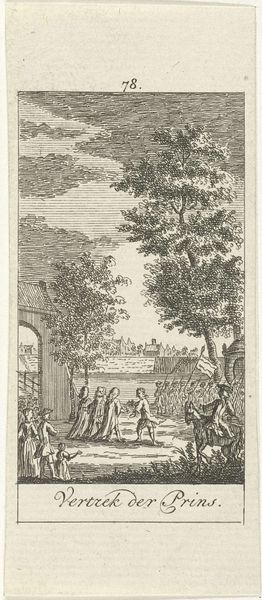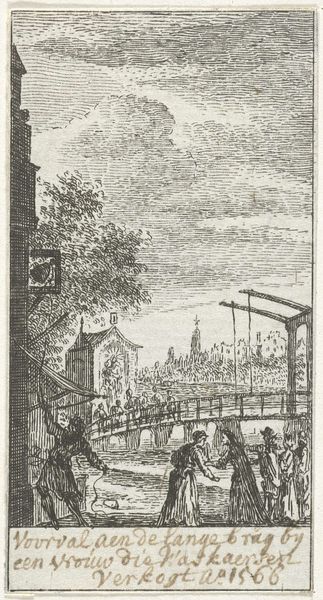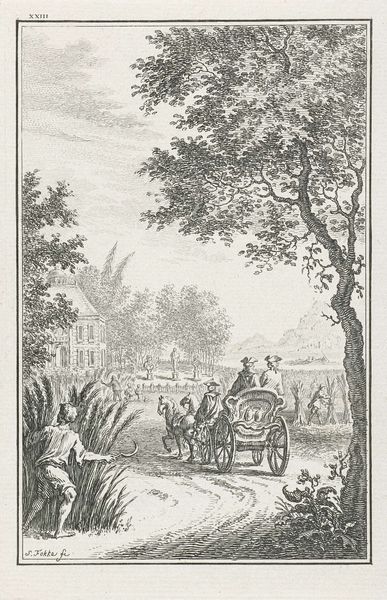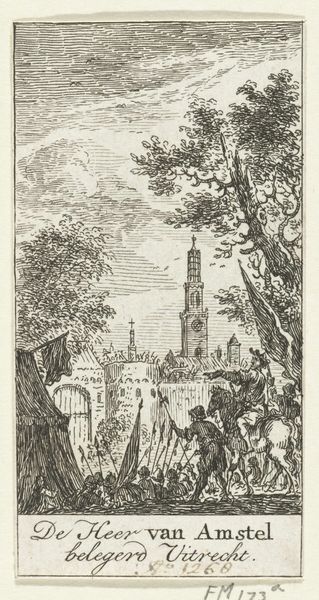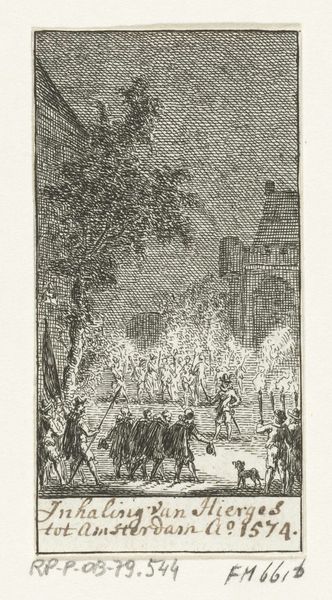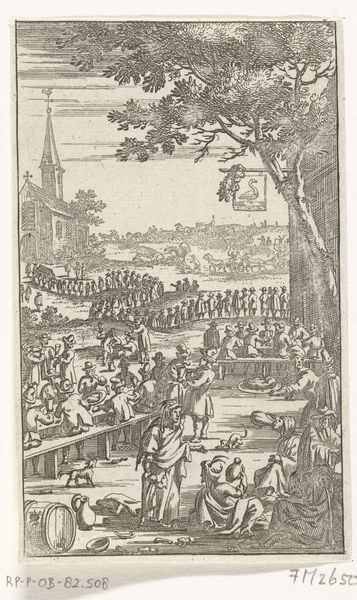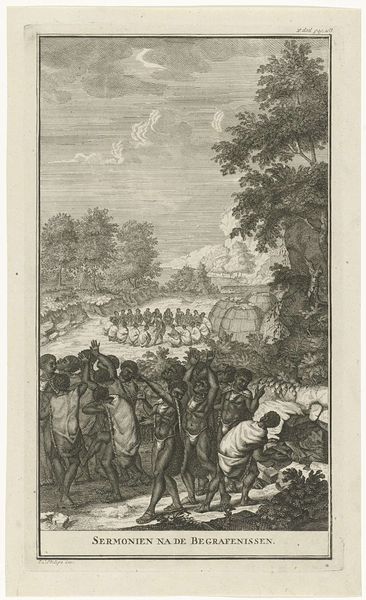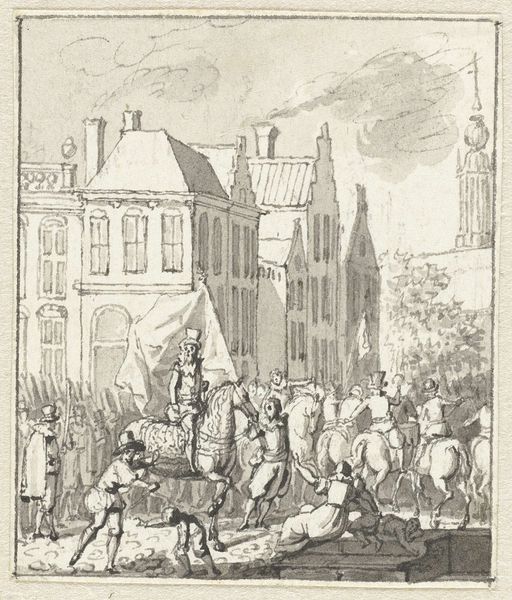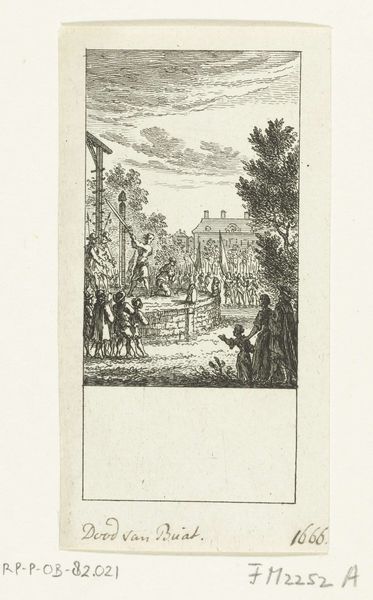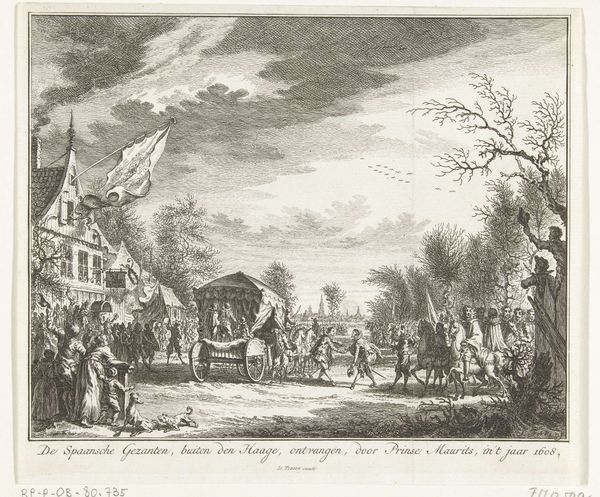
Dimensions: height 82 mm, width 56 mm
Copyright: Rijks Museum: Open Domain
Curator: My first impression is of a hushed departure, or maybe a melancholic pilgrimage. The ink seems to wash away the scene's immediacy, making it more of a distant memory. Editor: Indeed, it evokes that sentiment, doesn't it? We're looking at Jacobus Buys' work, “Uittocht van de remonstrantse predikanten, 1619,” made between 1780 and 1795. This is a drawing in ink, pen, and etching on paper held at the Rijksmuseum. It depicts the exodus of Remonstrant preachers. Curator: "Exodus" feels so monumental, but here, in the delicate lines, there's a vulnerability. You see figures clustered together, maybe for support, or whispering final words. Do you think Buys consciously chose such a delicate medium to amplify this emotional fragility? Editor: Given the historical context—the Remonstrants being ousted for their religious beliefs—the apparent fragility contrasts interestingly with their steadfast convictions. Etching can be precise but also atmospheric, mirroring the simultaneous personal suffering and wider societal upheaval. Note how the landscape seems to blend into the sky—there is a merging, blurring of what must have been previously sharp borders of belief and community. Curator: I hadn't thought of it like that, with beliefs and communities fading into one another! It reminds me that depictions of historical events are never entirely objective. The artist always filters events through a lens of personal understanding, consciously or unconsciously. Editor: Precisely! And Buys created this almost two centuries later, as cultural memory of religious dispute became a symbol for his own Romantic era. The choice to present this event with all its personal implications makes it more universally relevant. Curator: Looking again, that delicate blending lends it the air of a shared, national memory as well—everyone who has lived in this landscape becomes enmeshed in the history shown, an implicit message for tolerance and compassion. I wonder if Buys was successful in communicating the significance to a wider audience at the time. Editor: Perhaps it’s not about immediate success but about contributing to a continuing conversation—and this conversation is ongoing right here, right now. Curator: Indeed. It's an image that gently pulls us into history and gently reminds us of its echoes today.
Comments
No comments
Be the first to comment and join the conversation on the ultimate creative platform.
